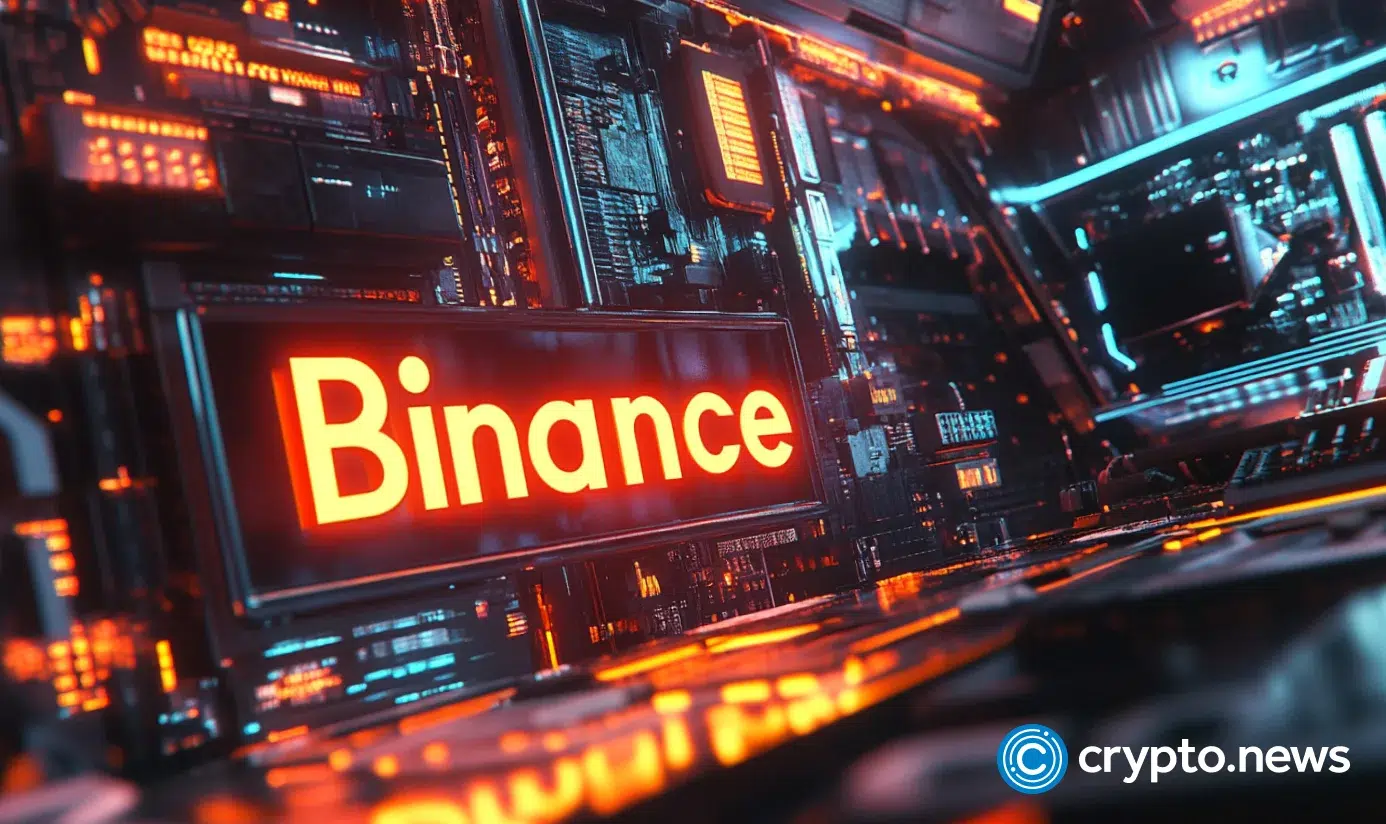
What do Binance’s recent outages, token volatility, and legal disputes tell us about the broader challenges it faces across different regions?
Binance is back in the headlines
Binance, the world’s largest crypto exchange by trading volume, has hit a turbulent stretch this April. Two major incidents, occurring just days apart, have renewed scrutiny over the platform’s operational stability.
On Apr. 15, an Amazon Web Services (AWS) outage disrupted Binance’s systems in the AP-NORTHEAST-1 region, which covers areas including Japan and Korea.
As AWS services went down, Binance, alongside several other leading exchanges and crypto platforms faced technical disruptions. This led Binance to temporarily suspend crypto withdrawals.
Just two days earlier, on Apr. 13, the Mantra (OM) token, a fast-emerging crypto asset tied to real-world asset tokenization, experienced a sudden and severe crash. Within an hour, its price plummeted from $6.32 to $0.42, erasing over $5.5 billion in market value.
Binance, one of the main exchanges where OM is heavily traded, was quickly drawn into the spotlight. Allegations surfaced, ranging from forced liquidations to questions about unusual token activity before the crash. In response, Binance denied any direct involvement or misconduct.
These incidents come as Binance continues to face mounting legal and regulatory pressures. The exchange is currently battling an $81.5 billion lawsuit in Nigeria and remains under investigation by the U.S. Securities and Exchange Commission.
What really happened during the AWS outage
The trouble began early on Apr. 15 at 1:15 a.m. PDT (8:15 a.m. UTC), when AWS experienced a power-related failure in its AP-NORTHEAST-1 region. Both the primary and backup power supplies to a set of cloud servers, specifically EC2 instances, failed simultaneously, thereby triggering a ripple effect across 12 critical AWS services.
Binance, along with several other centralized exchanges such as KuCoin, MEXC, and Coinstore, was severely affected. Platforms and tools that rely on real-time data, including DeBank and Rabby Wallet, also began to experience disruptions.
By 8:05 a.m. UTC, Binance posted a notice on X confirming it was facing network issues due to the AWS outage. The exchange noted that while some trades were processed successfully, others were not. Users were advised to retry any failed orders.
At 8:07 a.m. UTC, Binance temporarily suspended all withdrawals. The exchange stated that this move was “to keep safe,” describing it as a precautionary step while backend systems remained unstable.
At 8:16 a.m. UTC, Binance announced that services were starting to recover. Withdrawals were reopened, though the exchange warned users that delays might persist.
Although AWS officially resolved the outage by 8:51 a.m. UTC, Binance’s systems did not bounce back immediately. As late as 9:30 a.m. UTC, users continued to report slow performance, failed trades, and missing confirmations.
During the outage, users encountered a range of glitches. Binance’s app displayed red error warnings and greyed-out fields, particularly for withdrawals involving major blockchains such as Ethereum (ETH), Solana (SOL), Polygon (POL), and Arbitrum (ARB).
Some users reported being unable to access their funds even after withdrawals resumed. However, there were no widespread reports of asset losses.
Dr. Max Li, CEO of decentralized AI cloud platform OORT, pointed to the dangers of centralized infrastructure in comments sent to crypto.news.
“AWS’s outage today is a textbook example of the single point of failure risk that comes with centralized cloud infrastructure. It’s a reminder of why demand is growing for more distributed and resilient models.”
Decoding the Mantra crash
The sharp collapse in Mantra has triggered a wave of speculation, with many market participants questioning whether the drop was a natural market correction or the result of coordinated manipulation.
Investor Anon Vee described the OM crash as a clear instance of price manipulation. He argued that market makers often work with token projects to inflate the price of lesser-known assets. Once retail investors are drawn in, these entities exit their positions, leading to a steep decline.
Crypto commentator Leonidas raised similar concerns, highlighting Binance’s role in promoting OM. He claimed the exchange helped build retail hype around the token, which was then offloaded by insiders after prices surged.
John Mullin, co-founder of Mantra, pushed back against the allegations of insider trading. He attributed the crash to forced closures by certain centralized exchanges.
Sherpas, OMies, and broader crypto community,
First off, the team and I greatly appreciate the support that we have received over the past several hours, which we believe is a testament to the strong support MANTRA has among its investors and community.
We have determined that…
— JP Mullin (🕉, 🏘️) (@jp_mullin888) April 13, 2025
According to him, the event took place during a period of thin liquidity, specifically on a Sunday night, which made the impact worse.
Binance offered a different explanation, citing cross-exchange liquidations as the main driver. The platform explained that leveraged positions using OM as collateral were automatically sold off as prices declined, triggering a cascade of liquidations.
The exchange also noted that it had implemented reduced leverage limits for OM back in October 2024 as part of broader risk control efforts.
On-chain data added another layer of scrutiny. Seventeen wallets reportedly deposited over 43 million OM tokens, worth around $227 million, to Binance and OKX shortly before the crash.
While this does not directly prove market manipulation, the timing raised concerns about deliberate dumping by large holders. Binance acknowledged that liquidations across platforms intensified the market downturn.
In January 2025, Binance had already warned users about OM’s tokenomics, citing the risk of increased circulating supply.
After the crash, the exchange reiterated that it was not the primary cause of the price drop, instead attributing it to forced liquidations by other centralized exchanges.
Mantra CEO JP Mullin supported this position, stating that the crash was triggered by another exchange, which he did not name.
Although some in the community remain skeptical of Binance’s conduct, the incident appears less about direct misconduct and more about systemic vulnerabilities across the ecosystem.
What’s next for Binance?
While recent technical issues and market controversies may dominate headlines in the short term, Binance’s more consequential challenges lie elsewhere.
In Nigeria, the exchange is facing an $81.5 billion lawsuit filed by the Federal Inland Revenue Service in February 2025. The case alleges that Binance operated in the country for over six years without proper registration or licensing.
Of the total claim, $79.5 billion is attributed to economic losses, while $2 billion concerns unpaid taxes for the 2022–2023 period.
Binance’s peer-to-peer trading platform is a key focus of the complaint. Nigerian authorities argue that it played a role in weakening the naira and enabling unregulated capital flows.
An affidavit submitted by Jimada Yusuf from the National Security Adviser’s Office stated that Binance had more than 386,000 active users in Nigeria during 2023.
These users reportedly generated $21.6 billion in trading volume and $35.4 million in net income. Authorities say this establishes a substantial economic footprint that requires adherence to local financial regulations.
Binance maintains that Nigeria is not a key market for the company and disputes the accuracy of the figures cited. The exchange halted naira transactions in March 2024 and continues to deny any involvement in currency destabilization.
No company executives are expected to appear in court. Former regional manager Nadeem Anjarwalla, who fled Nigeria in 2024, is scheduled to be tried in absentia. If convicted, Binance could face the full financial penalty, and Anjarwalla may face jail time.
Among procedural objections, Binance reportedly requested the dismissal of the case over a spelling error in court documents. The argument has not disrupted the proceedings.
Meanwhile, Binance continues to face unresolved regulatory action in the U.S.. In June 2023, the SEC filed 13 charges against the company.
These include operating unregistered exchanges and facilitating unregistered securities offerings involving tokens such as BNB and BUSD.
The SEC case was paused for 60 days in February 2025 to allow review by a newly formed crypto task force. As of now, no resolution has been reached.
This legal battle follows Binance’s $4.3 billion settlement with the U.S. Department of Justice and the Commodity Futures Trading Commission in November 2023. That agreement, related to anti-money laundering violations, dealt a substantial blow to the company’s global reputation.
Together, these regulatory developments signal more than isolated legal confrontations. While short-term outages and market fluctuations may eventually be resolved, the longer-term threat to Binance lies in its ability to address deep structural and legal challenges in major jurisdictions.



